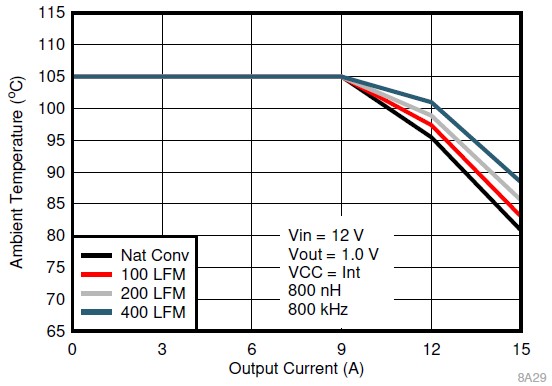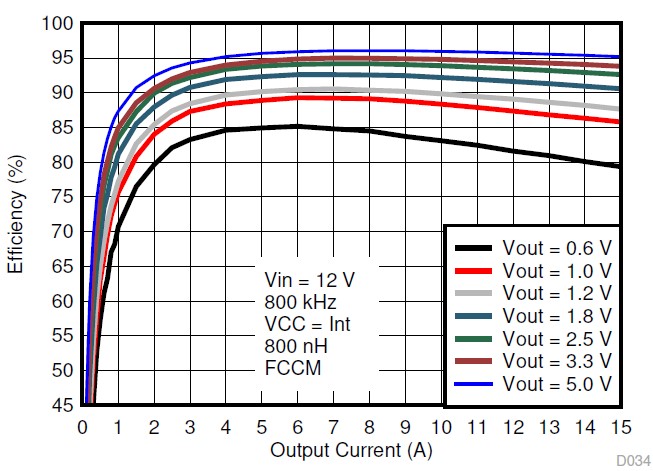SNVAA29 October 2021 TPS542A50 , TPS543320 , TPS543B20 , TPS543C20A , TPS546A24A , TPS546B24A , TPS546D24A , TPS548A28 , TPS548B28 , TPS54J061
4 High Efficiency and Thermal Performance
NICs employ a circuit board with many PCB layers, depending on the form factor constraints. Since the NIC is designed to be used in tight spaces, consider the thermal environment and available airflow when selecting DC/DC converters. The ambient temperature inside a rack server, for example, is typically between 65°C and 70°C since forced airflow is usually available. Higher circuit board temperatures translate to lower reliability, and higher current DC/DC converters contribute to the overall thermal budget.
Figure 4-1 shows the safe operating curve and Figure 4-2 shows the efficiency plot of TPS548A29. The TPS548A29 DC/DC converter it a 3x4mm QFN package safely delivers 15-A and 1 V output with the ambient temperature of 81°C, without airflow. At 15-A and 1 V output, the total efficiency is about 86% at 800 kHz, which translates to the entire solution dissipating less than 2.5 W and the IC dissipating about 1.7 W, knowing the junction-to-ambient thermal resistance RθJA is 26.6° C/W for the evaluation board measured.
The TPS548A29 measured junction-to-ambient thermal resistance of 26.6° C/W is based on a 4-layer, 2-oz Cu per layer and a 2.75 inch by 3 inch board size, which demonstrates low thermal resistance. However, many thermal metrics exist for semiconductor packages, which range from RθJA to RψJT. Often, designers misapply these thermal metrics when trying to estimate the junction temperatures in their systems. Ultimately, thermal performance depends on the circuit-board layout rather than using standard JEDEC-referenced thermal numbers. (2)
 Figure 4-1 TPS548A29 SOA Curve
Figure 4-1 TPS548A29 SOA Curve Figure 4-2 TPS548A29 Efficiency
Curve
Figure 4-2 TPS548A29 Efficiency
Curve